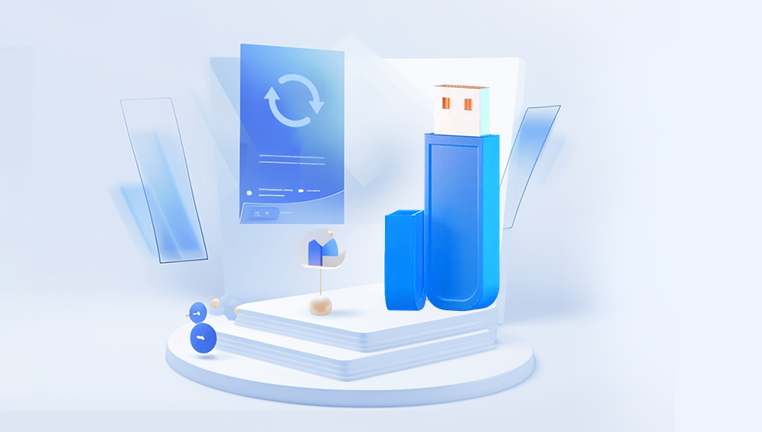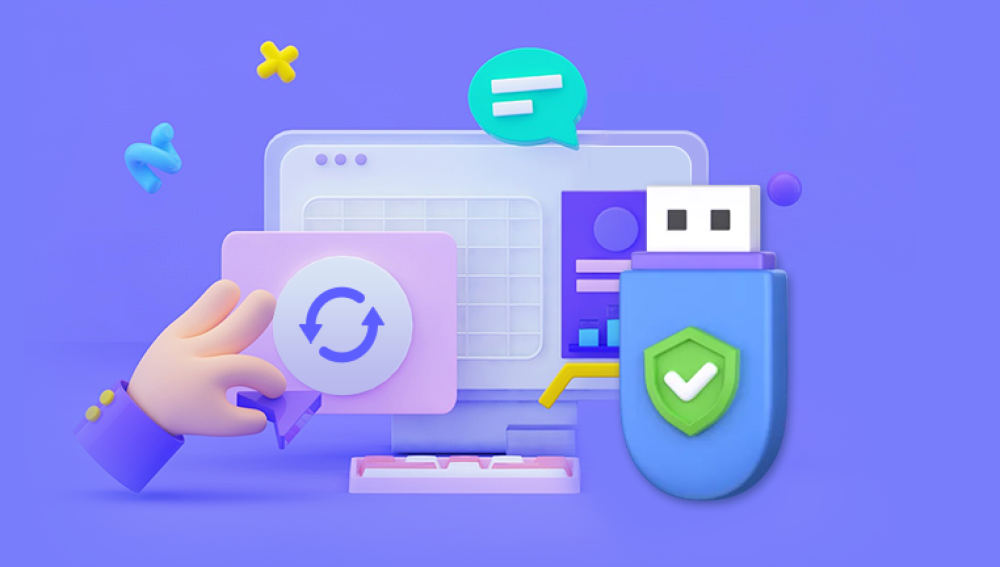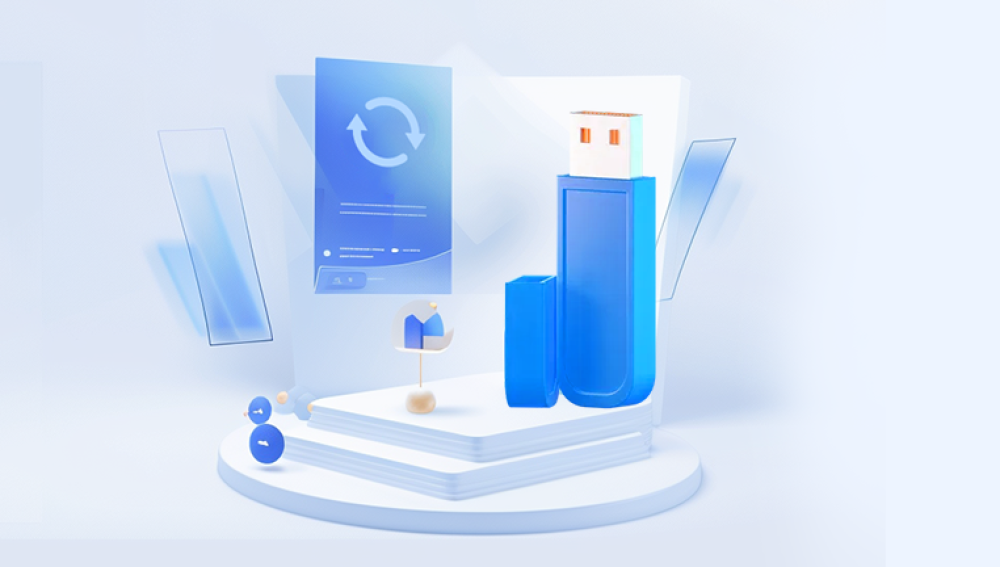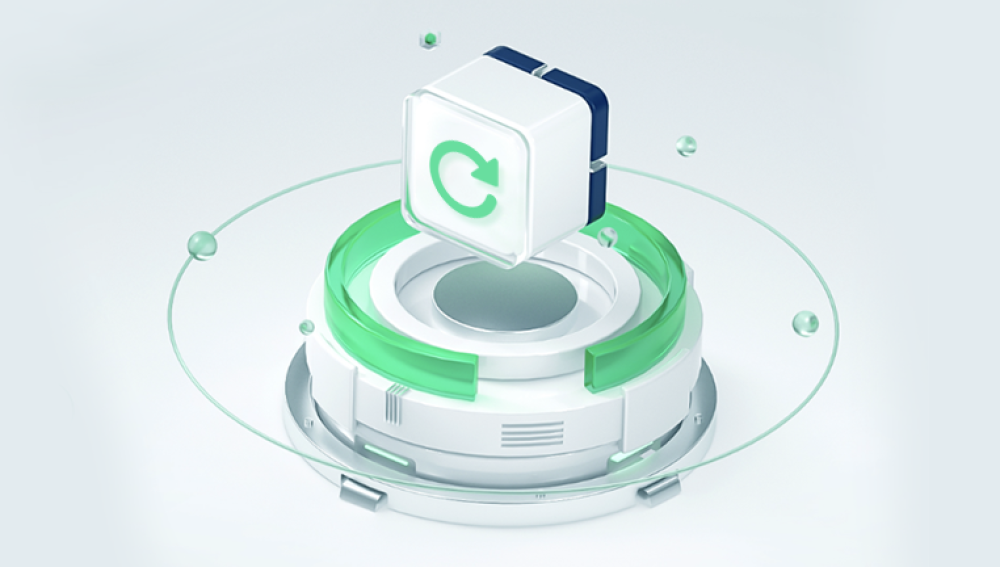A partition is a defined storage space on a physical drive, such as a USB drive, which is managed separately from other partitions on the same drive. Partitions allow you to segment your drive into multiple, logical sections that can host different file systems or operating systems.
When a partition is deleted, the file system's metadata indicating the partition's start and end points, as well as its file structure, is erased. However, the actual data often remains intact until it is overwritten by new data. This means that with the right tools and methods, it is often possible to recover the data from a deleted partition.

Steps to Recover a Deleted Partition on a USB Drive
Stop Using the USB Drive: To maximize the chances of a successful recovery, avoid writing new data to the USB drive. Any new data could overwrite the deleted partition's data, making recovery more difficult or impossible.
Choose a Data Recovery Tool: There are various data recovery tools available, ranging from free software to professional, paid solutions. Some popular tools include:
TestDisk: An open-source data recovery software designed to help recover lost partitions and make non-booting disks bootable again.
EaseUS Data Recovery Wizard: A user-friendly tool that supports partition recovery.
MiniTool Partition Wizard: Another effective tool for partition recovery.
Recuva: A popular, easy-to-use tool, although it is more geared towards individual file recovery rather than entire partitions.
Create a Disk Image (Optional): Before proceeding with recovery, consider creating a disk image of the USB drive. This way, you have a backup of the drive's current state, allowing you to attempt multiple recovery methods without risking further data loss.
Using TestDisk for Partition Recovery
TestDisk is a powerful, open-source data recovery software that is particularly effective for recovering deleted partitions. Here is a step-by-step guide:
Download and Install TestDisk: Download TestDisk from the official website and install it on your computer.
Run TestDisk: Open TestDisk with administrative privileges. You will be presented with a command-line interface.
Select the Drive: TestDisk will list the available drives. Select the USB drive from which you need to recover the partition.
Choose Partition Table Type: TestDisk usually detects the partition table type (e.g., Intel, EFI GPT) automatically. Verify and proceed.
Analyze the Drive: Choose the 'Analyze' option. TestDisk will perform a quick scan and display the current partition structure.
Deep Search: If the quick scan does not find the deleted partition, choose 'Deeper Search'. This thorough scan will take more time but has a higher chance of locating the deleted partition.
Select the Partition to Recover: Once TestDisk finds the deleted partition, it will display it in the list. Select the partition and choose to write it to the disk.
Reboot and Verify: After writing the partition structure, reboot your computer and check if the USB drive is accessible with the recovered partition.
Using EaseUS Data Recovery Wizard for Partition Recovery
EaseUS Data Recovery Wizard is another excellent tool for partition recovery, especially for users who prefer a graphical user interface.
Download and Install EaseUS Data Recovery Wizard: Download and install the software from the official website.
Launch the Software: Open EaseUS Data Recovery Wizard. The interface will show all available drives, including the USB drive.
Select the USB Drive: Click on the USB drive to start scanning.
Scan for Lost Partitions: EaseUS will perform a quick scan followed by a deep scan to find deleted partitions.
Preview and Recover: Once the scan is complete, EaseUS will display the found data. You can preview the files and select the partition or files you want to recover. Click on 'Recover' and save the recovered data to a different drive to avoid overwriting.
Preventive Measures
To avoid future partition loss, consider the following preventive measures:
Regular Backups: Regularly back up important data to multiple storage devices or cloud services.
Use Reliable Software: Use reliable partition management and data recovery software to minimize risks of data loss.
Avoid Unsafe Removal: Always use the 'Safely Remove Hardware' feature when disconnecting USB drives to prevent corruption.
Monitor Drive Health: Use tools to monitor the health of your USB drives and replace them if they show signs of failure.
Recovering a deleted partition from a USB drive is feasible with the right tools and methods. By acting promptly and using reliable recovery software, you can maximize your chances of restoring your valuable data. Whether you choose an open-source tool like TestDisk or a commercial product like EaseUS Data Recovery Wizard, the key is to handle the drive with care and follow the recovery process meticulously.




